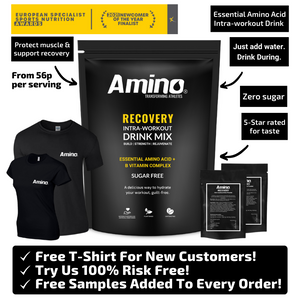The key to achieving your goals is in your training program.
In this article we explain how to design and structure your plan so you see results – fast.
Reverse engineer your goals
‘Reverse engineering’ is a simple but effective method that most of us just don't use enough.
In simple terms: start at the end and work back to where you are today. Look into the future and visualise what you want to achieve. Then identify the steps you need to take to make that vision a reality. This reverse engineering allows you to achieve a couple of things...
First, it helps you break big goals down into smaller chunks. This makes your big goal easier to manage and handle over time, as lots of small wins add up to larger wins.
Second, it keeps you true. We all set out with the best of intentions but life often gets in the way. Having a tangible plan with milestones along the way means you can keep your focus on what matters, so you get results.
Top Tip: Make your goals BIG and tell people close to you about them. Those people will hold you accountable when the going gets tough.
Set a realistic time scale
Once you know what you want, you need a time frame. This is where a lot of people come unstuck.
Most people we work with underestimate how long it will take to achieve their goals. If you’re looking to get leaner, we suggest a minimum of 13 weeks. If you want to gain muscle, you need a minimum of 6 months. Performance athletes should have longer-term goals and be thinking in 12-month cycles.
Set KPIs
Now that you have a time frame, you need to pick your KPIs (key performance indicators). This is how you’re going to measure your performance.
If you’re looking to build muscle, lean muscle mass indices are a great place to start. Body fat percentage, on the other hand, is a great metric for fat loss.
As an athlete, you need to figure out what your key metrics are going to be, from your power-to-weight ratio in running and cycling to belt colour in Brazilian Jiu-Jitsu (BJJ).
Identify milestones on your journey
Map a timeline from your end goal to where you are now and break that large task into smaller chunks, with checkpoints along the way.
Set these milestones as smaller, more manageable targets.

Put your plan where you can see it
Stick your plan somewhere you will see it regularly (on your desk, next to your bed, by the bathroom mirror). This keeps you focused and encourages you to check in on your progress.
If all goes to plan – awesome! If it doesn’t, hatch a new plan and start again, taking your new learning into consideration.
Remember: A resilient person with a plan will come out ahead of a talented person with a poor system.
If you want help building your plan, drop us an email at info@drinkamino.com. We’d love to help you achieve your goals!
Get to work team!






